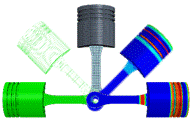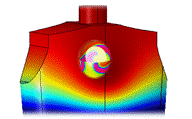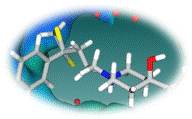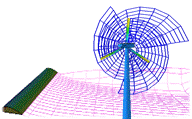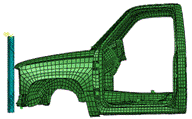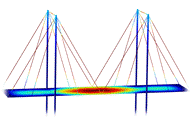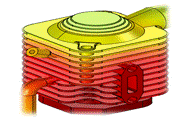SUSTAINABLE DESIGN SOLUTIONS
The resource availability in this planet earth is finite. According to United Nations definition, “Sustainable development is development that meets the needs of the present without compromising the ability of future generations to meet their own needs”. Sustainability of available resources is a must for our future generation. One of the focus area of ATOA's Research and innovation is Sustainable design methods for product and process development. We developed simulation models to predict the sustainability index of product development, manufacturing methods and product life. We offer services to help our clients decide on energy efficient material, process and application design by extending our simulation results to calculate the energy requirements and sustainability index or green report card. This can be achieved with a little additional efforts in an integrated virtual product development environment, as adopted at ATOA. We offer following sustainable design solutions.
Multiphysics Simulations for Sustainable Design
Multiphysics simulation methodology for sustainable design solutions with a focus on new product development for energy efficient materials, manufacturing methods and lifecycle performance enhancement for maximizing utility of limited resources. Computer Aided Engineering simulations are extensively used for new product development and performance enhancement of existing products. These simulations are dominated by single physics based design. The multiphysics based simulation is increasingly used for design and optimisation for meeting multiple product requirements. The key focus of our sustainable design solution is about Multiphysics modeling methodology and examples for efficient design for sustainability. Multiphysics design methods for efficient and lightweight materials to meet multiple product requirements. The integrated virtual product development systems related to energy efficient material, process and applications design. Extension of models to predict the sustainability index of product development and manufacturing methods
A detailed simulation methodology for structural optimization and material design to meet multiple requirements and to show cases the benefits of multiphysics optimization for sustainable designs. The results will be analyzed to showcase the benefits of efficient use of existing material, energy efficient design, performance enhancement by multiphysics design and optimization.
Sustainable Building/ Infrastructure Technologies
Application computer aided design methodology for infrastructure or building information management is revolutionising the industry. Building industry is one of the largest consumer of energy and makes a big impact on our environment. For example, Residential and Industrial building in USA consumes 40% of the total energy produced, 70% of the electricity, 40% of the raw materials and 12% of fresh water supplies.
Some of solution at ATOA for Sustainable Building/ Infrastructure Technologies includes, Green architecture, Low cost sustainable materials, Composite materials, Low cost construction technologies, Zero energy buildings, and Digital Connected Buildings. We specialise on Building thermal simulation, daylighting, Renewable energy sources on annual building energy saving and cost benefit quantifications.
Sustainable/ Renewable Technologies Benefit Quantification
We offer simulation services to predict the benefits of Clean energy (Solar and wind) Technology, Eco building materials (low U value, selective solar control), Waste heat recovery (Thermoelectric, solar thermal, heat pump) and recyclable material systems. We have developed tools and methodologies for benefit quantification related to sustainability and the full life cycle of a product. We focus on cost and energy saving benefit quantifications for informed decision making.
Sustainable design Technologies will also be targeted towards Product design for the bottom of the pyramid,Low cost and high quality, Localised Mass production, Customised for Local conditions, extensive use of Renewable energy. Contact ATOA for sustainable design solutions at http://cae.atoa.com/contact-resources/contact-form .

